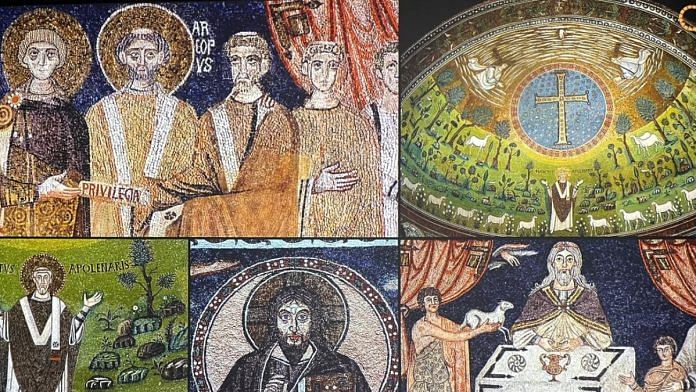New Delhi: Walk through the corridors of Roman churches, have a tête-à-tête with the villas of Piazza Armerina or bask under the ornate ceilings of Basilica of San Vitale, the artistic pinnacle of the Byzantine Empire. It’s all happening under one roof in Delhi at the Humayun’s Tomb museum.
Six huge multimedia installations at an immersive exhibition are set to enthral the city with the rare opportunity to see 2,000–year–old mosaics, depicting the style and taste of Romans in their opulent daily domestic life. Mosaic is a form of art created using small pieces of coloured stone, glass or other material set in plaster.
Expensive and time–consuming to make, mosaics became a symbol of prestige and economic power around the second century BCE in Europe.
At the exhibition, Mosaico: Italian Code of a Timeless Art, visitors get to experience two millennia of mosaic craftsmanship, through walls, ceilings, columns, fountains, niches, and pediments adorned with the art that has stood the test of time. It also spotlights several iconic Italian sites known for stunning mosaics, like Rome, Ravenna, Palermo and Piazza Armerina.
The exhibition was inaugurated by Deputy Prime Minister and Minister of Foreign Affairs of Italy Antonio Tajani on 12 April and will go on till 30 August, offering an unprecedented blend of digital storytelling and ancient artistry. It has been organised by the Italian Ministry of Foreign Affairs and the Italian Embassy Cultural Centre along with the Humayun’s Tomb World Heritage Site Museum.
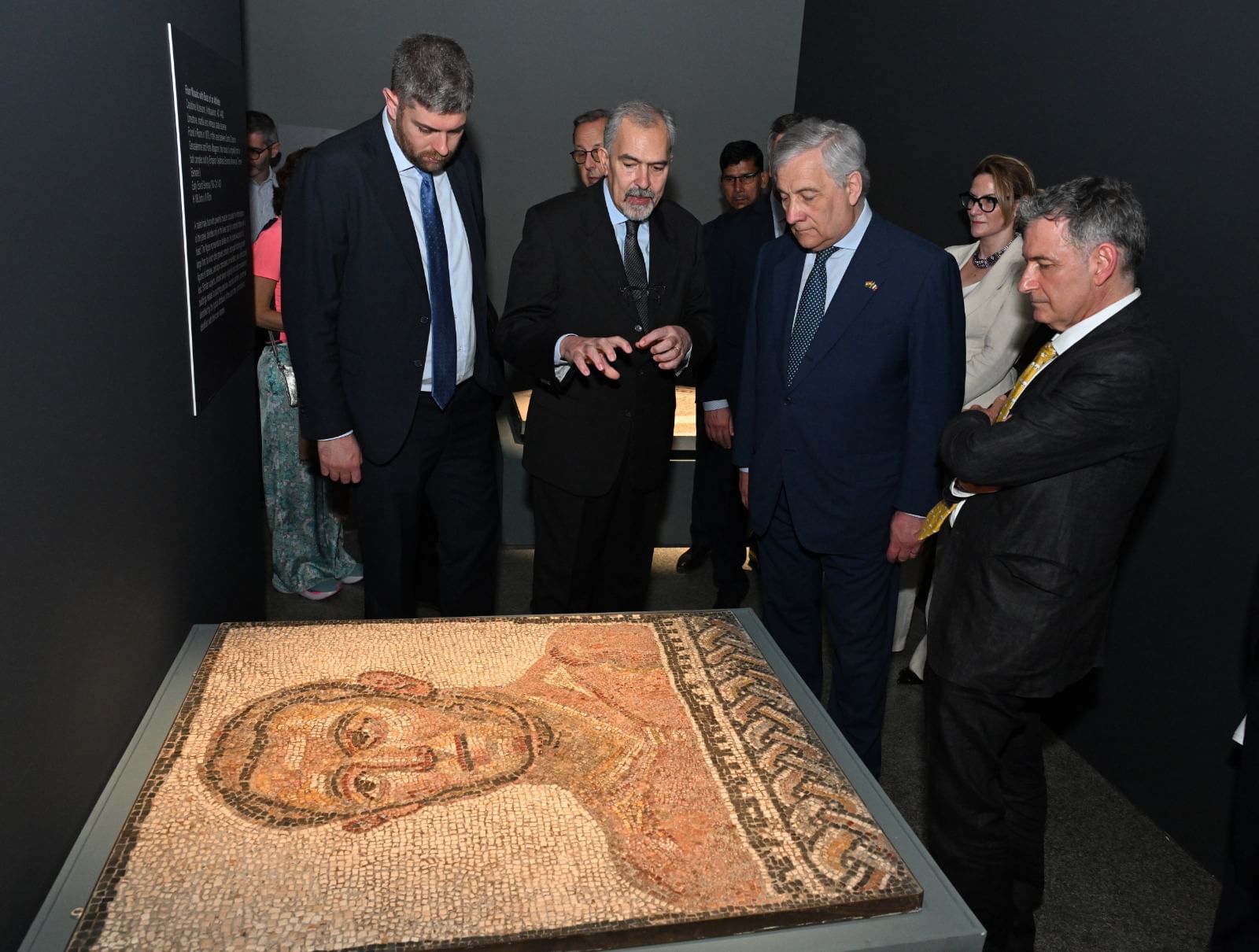
The centrepiece is the special presentation of five original mosaics from Rome’s Capitoline Museums, which houses an extraordinary collection showcasing Roman society through the ages. These artworks are being shown for the first time in India.
Andrea Anastasio, director of the Italian Embassy Cultural Centre, in his spirited talk described how the exhibition treats visitors to real mosaics after they have witnessed the immersive exhibition, which “takes the viewer through a journey into the vastness of mosaic culture in Italy”.
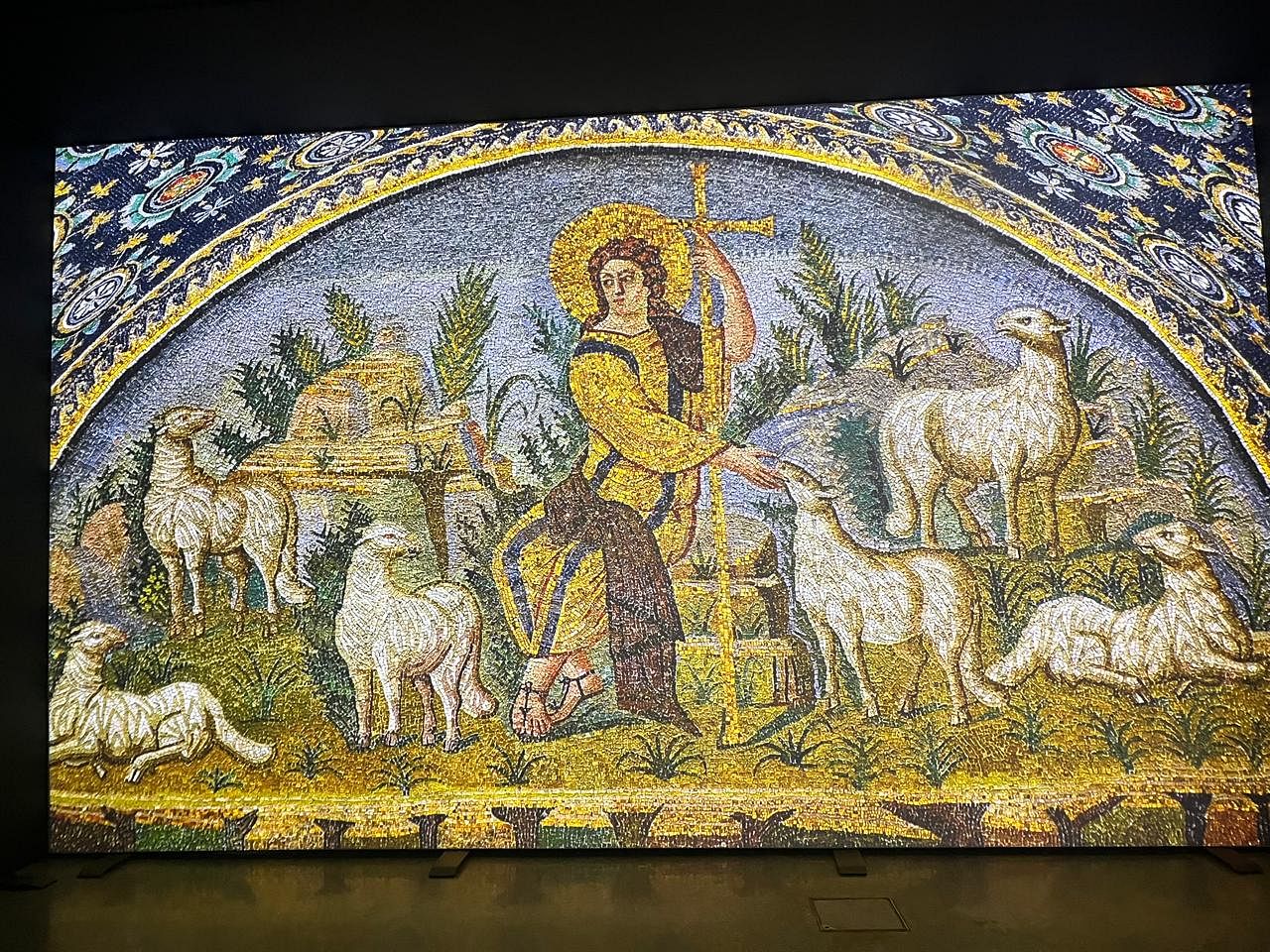
A walk through Italian streets
The mosaics from Piazza Armerina at the Humayun’s Tomb museum showcase scenes from daily lives and mythology. Details from The Great Hunt mosaic, for instance, show a hunting scene depicting the live capture of animals.
The triclinium mosaic, meanwhile, shows the apotheosis of Hercules. It also features other deeds of Hercules, such as the slaying of the Nemean lion, the Hydra of Lerna, and the Stymphalian birds; the capture of the Cretan bull and the cattle of the monster Geryon, among others.

The Palermo mosaics are capped by an elaborately carved Arab wood ceiling. The dazzling, predominantly gold mosaics enhanced with deep blues, greens, and reds, with the figures outlined in black, cover the ceilings and upper portions of the walls. The famous Christ Pantocrator (a depiction of Jesus Christ as the ‘Ruler of All’), surrounded by a ring of angels attired in the robes of Byzantine emperors, instantly grabs the attention of the visitors. The Old Testament cycle set along the side walls of the centre aisle follows the Roman church tradition. Its pictorial narrative runs chronologically from the Creation to scenes from the lives of the apostles Peter and Paul.
Also read: Painters and photographers see Bollywood very differently. NGMA show captures this
The history
The mosaics of Italy date back to the late second century BC, nurtured under the influence of the Hellenistic Greek pictorial tradition. The Romans further developed this art form by cutting materials into uniform, usable cubes and incorporating brightly coloured stones or glass into their creations. The earliest examples were emblemata (picture panels), introduced to the region by Greek craftsmen and found predominantly in the cities around the Bay of Naples and Rome.
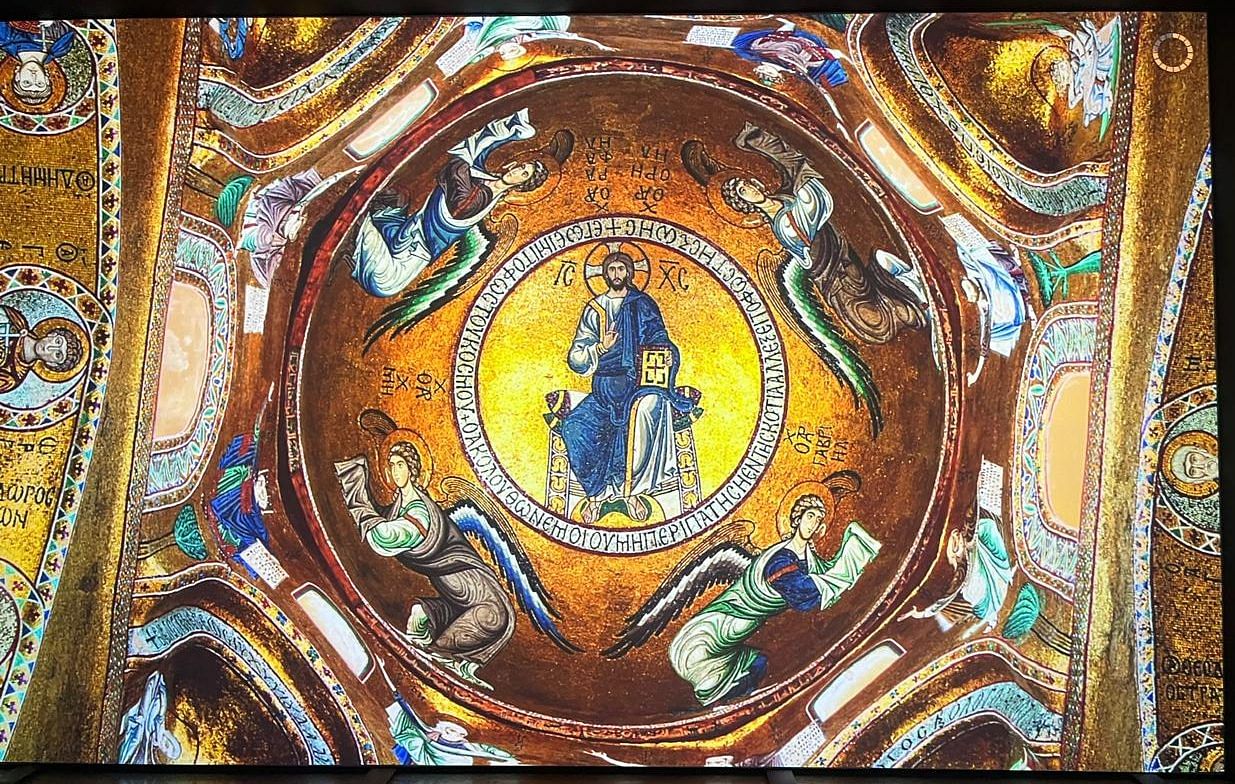
By the turn of the first century BC, the production of mosaic pavements became widespread in new Roman styles and resulted in a variety of different types of mosaic aesthetics, ranging from colorful figural scenes to black-and-white geometric and floral patterns throughout the Mediterranean country.
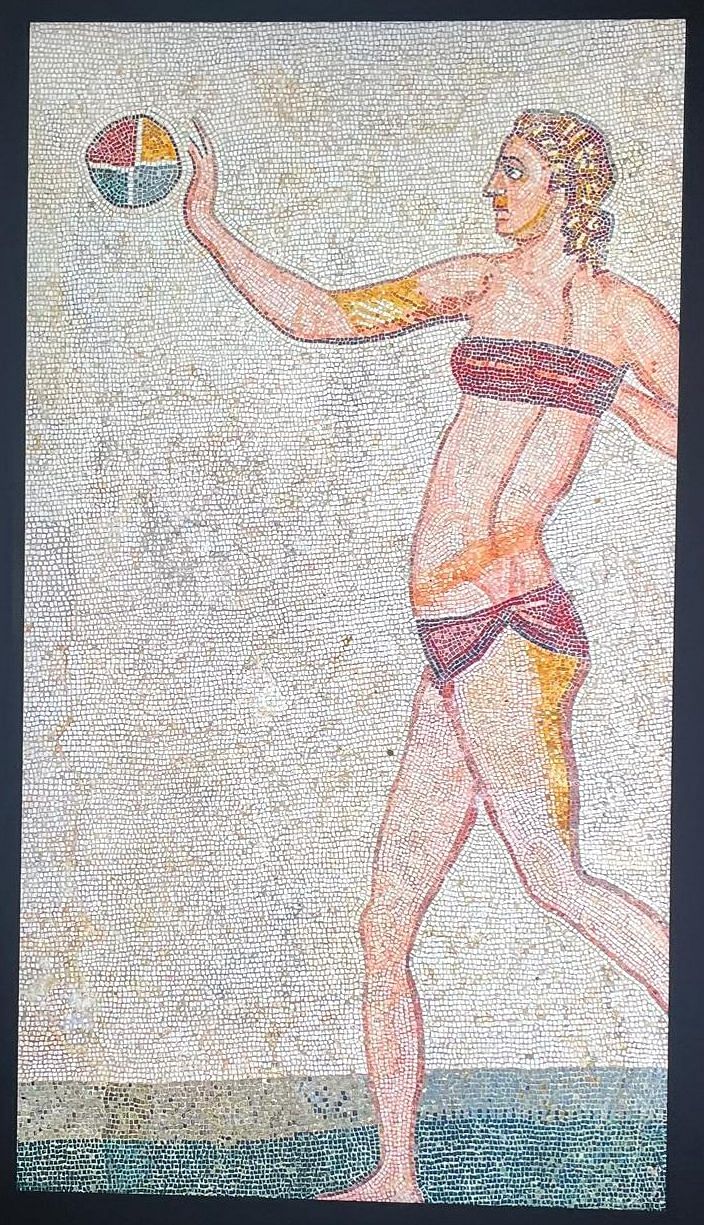
Ravenna was the capital city of the Byzantine Empire in the 6th century, and the mosaics in the Basilica of San Vitale reflect the grandeur and sophistication of that era. They depict various biblical scenes and portraits of saints and rulers.
Amidst elaborate biblical and conservative motifs, one imprint stands out—a series of quirky ‘bikini women’ playfully saying hello to the visitors.
Shilpi Goswami is an intern who graduated from Batch 1, ThePrint School of Journalism.
(Edited by Aamaan Alam Khan)



